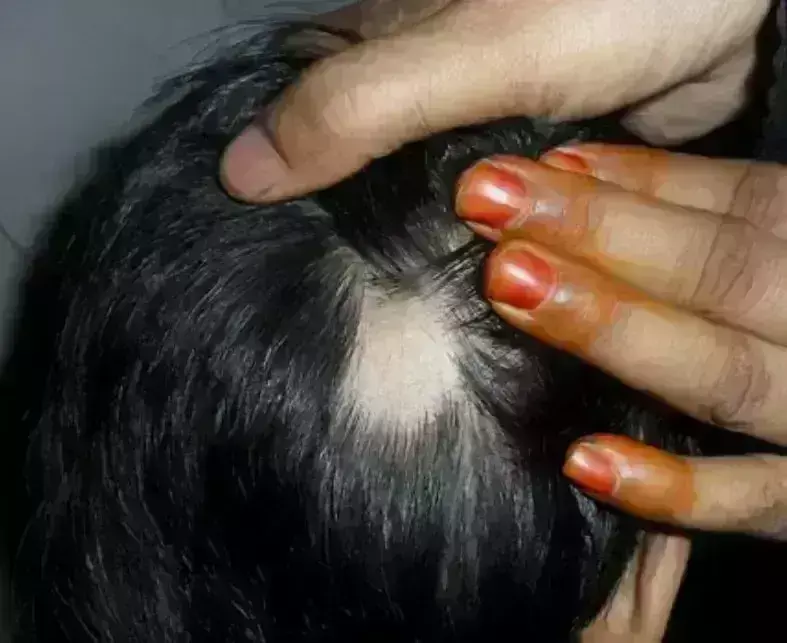- Home
- Medical news & Guidelines
- Anesthesiology
- Cardiology and CTVS
- Critical Care
- Dentistry
- Dermatology
- Diabetes and Endocrinology
- ENT
- Gastroenterology
- Medicine
- Nephrology
- Neurology
- Obstretics-Gynaecology
- Oncology
- Ophthalmology
- Orthopaedics
- Pediatrics-Neonatology
- Psychiatry
- Pulmonology
- Radiology
- Surgery
- Urology
- Laboratory Medicine
- Diet
- Nursing
- Paramedical
- Physiotherapy
- Health news
- Fact Check
- Bone Health Fact Check
- Brain Health Fact Check
- Cancer Related Fact Check
- Child Care Fact Check
- Dental and oral health fact check
- Diabetes and metabolic health fact check
- Diet and Nutrition Fact Check
- Eye and ENT Care Fact Check
- Fitness fact check
- Gut health fact check
- Heart health fact check
- Kidney health fact check
- Medical education fact check
- Men's health fact check
- Respiratory fact check
- Skin and hair care fact check
- Vaccine and Immunization fact check
- Women's health fact check
- AYUSH
- State News
- Andaman and Nicobar Islands
- Andhra Pradesh
- Arunachal Pradesh
- Assam
- Bihar
- Chandigarh
- Chattisgarh
- Dadra and Nagar Haveli
- Daman and Diu
- Delhi
- Goa
- Gujarat
- Haryana
- Himachal Pradesh
- Jammu & Kashmir
- Jharkhand
- Karnataka
- Kerala
- Ladakh
- Lakshadweep
- Madhya Pradesh
- Maharashtra
- Manipur
- Meghalaya
- Mizoram
- Nagaland
- Odisha
- Puducherry
- Punjab
- Rajasthan
- Sikkim
- Tamil Nadu
- Telangana
- Tripura
- Uttar Pradesh
- Uttrakhand
- West Bengal
- Medical Education
- Industry
Cases of pediatric alopecia areata double in last decade, finds JAMA study

USA: A new study published in the Journal of the American Medical Association - Dermatology looked at the prevalence and incidence rates of pediatric alopecia areata (AA) in the United States from 2009 to 2020, looking at the time, age, gender, race and ethnicity, and region, and found a prevalence of 0.11 percent (doubling over the last decade) and an incidence rate of 13.6 cases per 100 000 person-years.
Data on the prevalence and incidence of pediatric AA are critical for understanding the natural history of this medical condition. As a result, Paige L. McKenzie and colleagues undertook this study to establish the frequency and incidence of AA in a pediatric population across age, time, gender, race and ethnicity, and geographic locations in the United States.
Data from a standardized electronic health record were gathered from 5 children's hospitals in this multicenter cohort research (January 2009 to November 2020) to investigate the incidence and prevalence of pediatric AA. Patients under the age of 18 were included in the research if they had at least two physician visits with an AA diagnostic code or one dermatology specialty appointment with an AA diagnosis code. There were 5 409 919 patients in the prevalence denominator population. The population of the incidence denominator was 2 896 241. In the AA cohort, 5801 children were selected for inclusion, and 2398 (41.3%) had 12 months or longer of follow-up and are also included in the occurrence analysis.
The results of this study stated as follow:
1. The mean age of the 5801 patients in the AA cohort was 9.0 years, 56.2% were female, 18.9% were Black, 6.2% were Asian, 23.2% were Hispanic, and 40.7% were White.
2. The overall frequency of pediatric AA was 0.11%, and participants in the AA cohort were more likely to be older, female, and members of a racial or ethnic minority group than the general PEDSnet population.
3. Between 2009 and 2020, the total incidence rate of pediatric AA was 13.6 cases per 100 000 person-years.
4. The age-specific incidence rate was regularly distributed and peaked at 6 years. Female patients had 22.8% greater rates than male patients.
5. Furthermore, Hispanic children had the greatest occurrence rates.
In conclusion, the findings highlighted Asian and Hispanic children as high-risk demographic segments, with Asian children being two and three times more likely to be diagnosed with AA, respectively.
Reference: McKenzie PL, Maltenfort M, Bruckner AL, et al. Evaluation of the Prevalence and Incidence of Pediatric Alopecia Areata Using Electronic Health Record Data. JAMA Dermatol. Published online April 06, 2022. doi:10.1001/jamadermatol.2022.0351
Keywords: Pediatrics, hair loss, Alopecia Areata, Heath record, children, dermatology, ethnicity, scalp, skin, medical history, balding, JAMA,
Medical Dialogues consists of a team of passionate medical/scientific writers, led by doctors and healthcare researchers. Our team efforts to bring you updated and timely news about the important happenings of the medical and healthcare sector. Our editorial team can be reached at editorial@medicaldialogues.in.
Dr Kamal Kant Kohli-MBBS, DTCD- a chest specialist with more than 30 years of practice and a flair for writing clinical articles, Dr Kamal Kant Kohli joined Medical Dialogues as a Chief Editor of Medical News. Besides writing articles, as an editor, he proofreads and verifies all the medical content published on Medical Dialogues including those coming from journals, studies,medical conferences,guidelines etc. Email: drkohli@medicaldialogues.in. Contact no. 011-43720751


